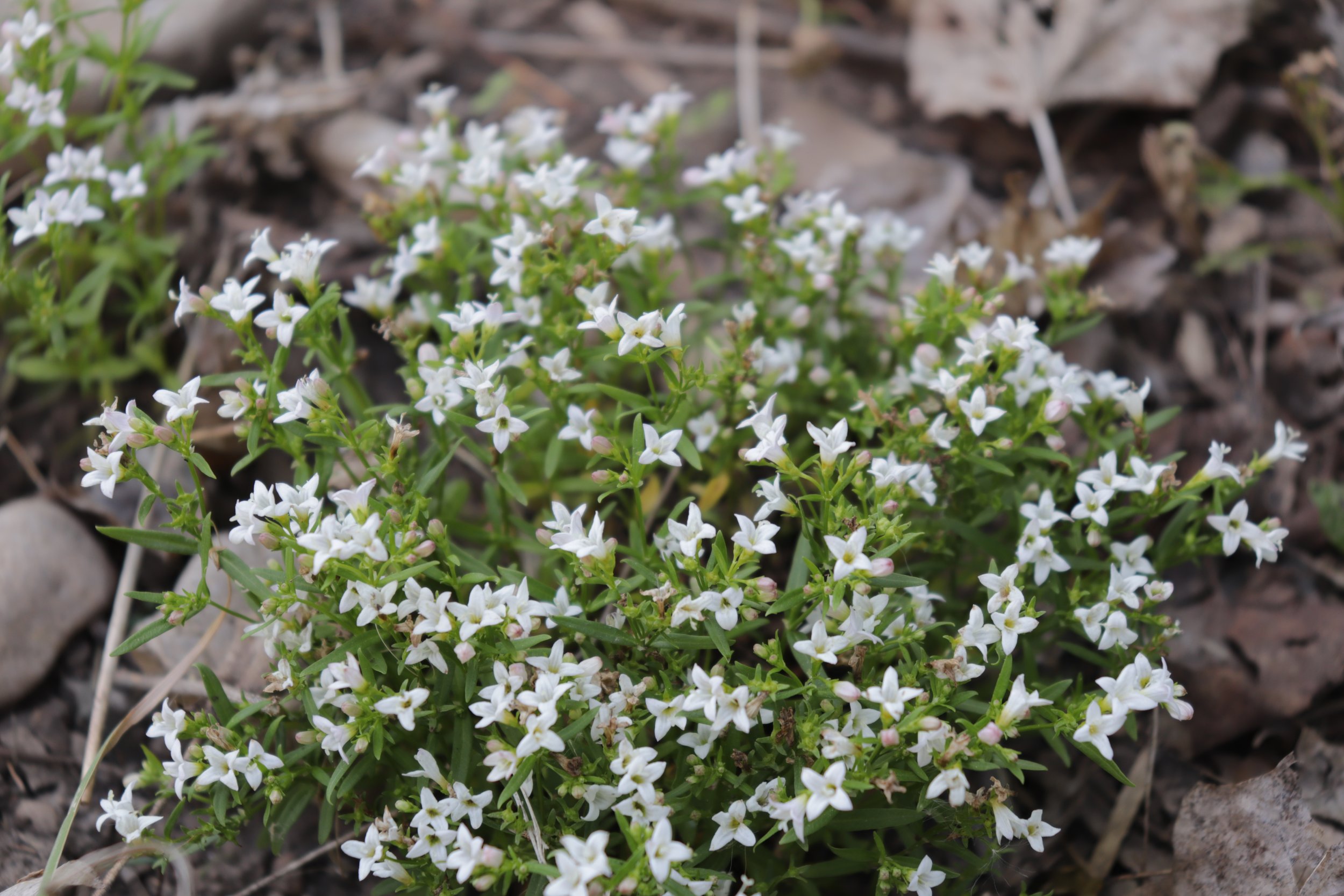The Best Native Plants for Rock Gardens
And containers
At In Our Nature, we always recommend an ecosystem approach to choosing the right plants for your garden. If you are looking for plants that will thrive in dry, shallow, rocky or nutrient poor soils then you want to look towards plants that grow in alvar ecosystems.
Alvars are ecosystems characterized by exposed limestone bedrock with little to no topsoil. As a result, the plants that grow here are adapted to thin, rocky soil with poor fertility and often very dry conditions. This makes alvar plants perfect for use in rock gardens or any other site with shallow/poor soil!
Native plants that find their origin in alvars are generally very drought tolerant, low growing and don’t mind nutrient poor, shallow or rocky soils. They also make great border plants along pathways!
Ontario Native Plants For Rock Gardens & Shallow Soil
Nodding onion has an elegant, compact form and delightful summer blooms. It thrives in droughts, full sun and soils that are compacted, sandy or rocky and even tolerates road salt. Tolerates light shade with reduced blooms. Rare in the wild in Ontario. Bumblebee magnet!
A true delight to have in the garden! Rich, magenta flowers, delicate lacy leaves and fluffy seed heads. It thrives in gravelly, rocky or sandy sites with full sun to part sun. It is drought tolerant but also does well in moist, but well-drained, soils.
A low growing, evergreen groundcover with early spring flowers. It will spread to form a dense mat of foliage unless its crowded out by taller plants. It will grow in most soils with good drainage and full sun. but really shines bright in dry, compacted, nutrient poor soils. Tolerates road salt.
Easy to grow and adaptable. It will grow well in full sun or full shade. It does best in moist, well draining soils but will tolerate drought. Often found growing in the rocky/gravelly soil along trails. The unique red and yellow flowers are always something to look forward to in the spring.
A low growing, clumping grass that thrives in extreme drought and full sun. It thrives in most well-drained soils especially those that are sandy or gravelly. Don’t let taller plants shade it out. Striking fall colours and interesting red flowers.
The delightful bell-shaped flowers of Harebell may look delicate, but don’t underestimate this one! It thrives in the toughest of conditions and is a staple in rock gardens. Tolerant of drought, shallow/rocky soil and full sun. Very long bloom time.
Low Calamint (Clinopodium arkansanum)
This low growing, highly fragrant mint species. It is not as drought tolerant as other species on this list so give it moist to dry, well-draining soils. Tolerates sandy, rocky soils and even brief periods of standing water. A great border plant along paths.
The bright blooms of coreopsis are familiar to many native plant gardeners. It thrives in dry, infertile, sandy soils and has a bloom time of about a month. Tolerates road salt.
Poverty Oats Grass (Danthonia spicata)
A low-growing grass that prospers in dry, infertile soils including those that are rocky or gravelly. It does best in full sun but will tolerate part sun too. The dried foliage takes on an attractive, curly look. Does most of its growing in cool weather.
Prairie Smoke (Geum triflorum)
One of the most popular plants at our nursery! Prairie smoke thrives in most well-drained soils including those that are shallow, rocky or barren. It may die off if the ground is too soggy in the winter/early spring. The fern-like leaves are evergreen and the nodding pink flowers are one of the first to bloom in the spring.
Canada Bluets (Houstonia canadensis)
A tiny plant (<15cm) with very tiny, but prolific, flowers. It will spread slowly to form a stunning groundcover. Despite looking delicate, Canada bluets thrive in shallow, bare, sandy soils. Full sun to part shade.
Creeping Juniper (Juniperus horizontalis)
A ground-hugging native shrub with blue-green foliage and a spreading habit. Rarely reaching more than 3ft high but often spreading upwards of 20ft out (you can prune it smaller). It thrives in dry, open areas with sandy or rocky soils. Intolerant of shade and poor drainage.
Early Saxifrage (Micranthes virginiensis)
A small plant with showy spring lowers. Early saxifrage is found in dry, rocky or sandy soils and tolerates full sun to light shade . A very underused plant for rock gardens. Prefers slightly acidic soils.
Easily grown in most well-draining soils and is very drought tolerant. It needs full sun to reach its full potential. Not picky about soil type and will even grow in very sandy soils. Can be a prolific spreader.
Often found growing among the exposed bedrock around Tobermory and Manitoulin island, Balsam groundsel does just fin in shallow, rocky soils. It appreciates some moisture in the soil but it must be well drained. Give it full sun.
Compact and very adaptable to a variety of soil and light conditions including dry, rocky or shallow soil. Give it sun to part shade. Tolerates road salt.
Fragrant Sumac (Rhus aromatica)
A tough, drought tolerant shrub that will grow just fine in rocky or compacted soil. Flowers appear in spring, before the leaves emerge. The flowers fade into red berries and the fall foliage turns stunning shades of maroon.
A short, clumping, ornamental grass with wonderful fall colours. Little bluestem sends down deep roots that allow it to thrive in harsh drought conditions. Tolerates poor, sandy soils.
Upland White Goldenrod prefers full sun and dry sandy soils but it will grow well in most gardens with well-drained soil and full sun. It’s an especially good native plant for rock gardens as it tolerates poor and shallow soils. Doesn’t like shade from taller plants.
Snowberry (Symphoricarpos albus)
Snowberry is a quite adaptable shrub. It thrives in full sun to part shade and average to dry, even rocky, soils. Showy white berries that persist into winter. It can be found in alvar shrublands, often with creeping juniper and fragrant sumac.
Lakeside Daisy (Tetraneuris herbacea)
This gem is endemic to the great lakes region, meaning it is not found anywhere else in the world (naturally, at least). It makes its home along rocky shorelines and alvars. In your garden, it will thrive in well-drained, rocky or sandy soils with full sun exposure. Rare in the wild in Ontario.























